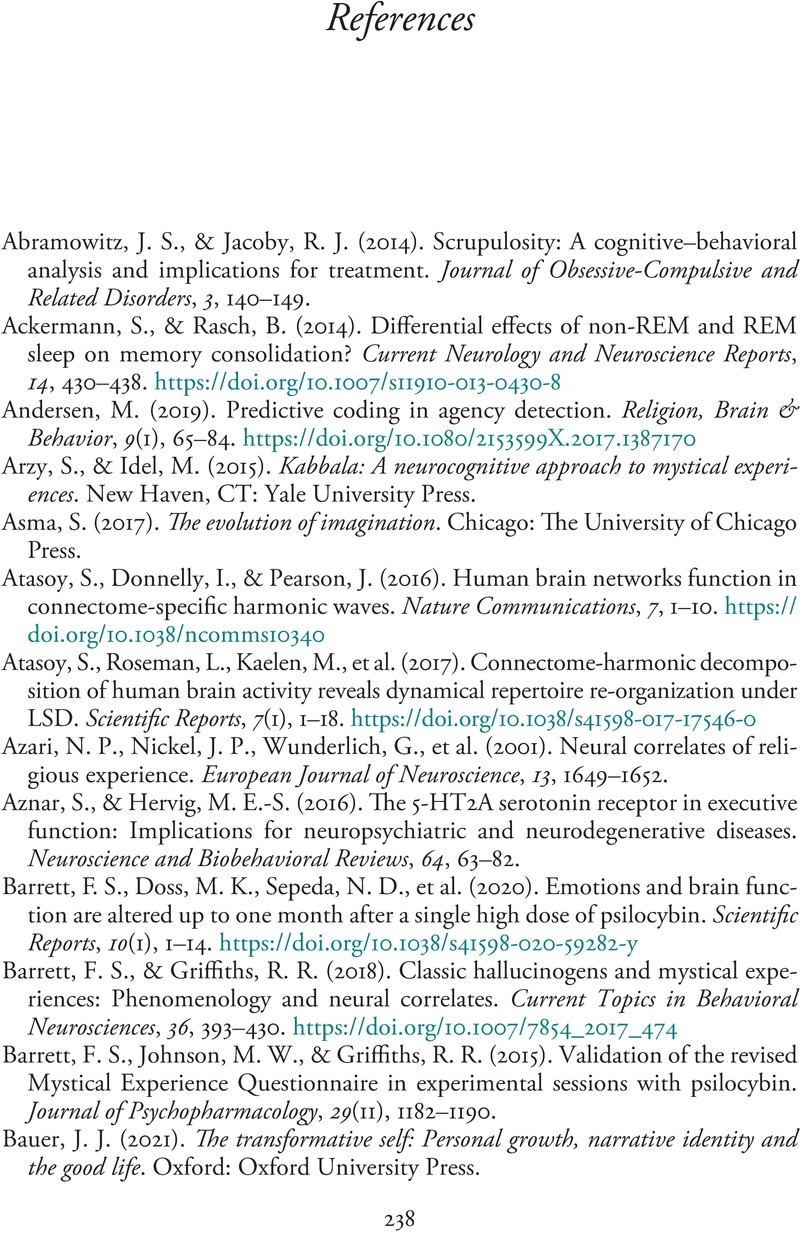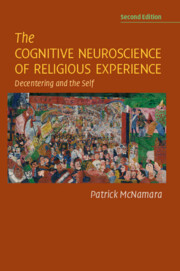Book contents
- The Cognitive Neuroscience of Religious Experience
- The Cognitive Neuroscience of Religious Experience
- Copyright page
- Dedication
- Contents
- Preface to Second Edition
- Acknowledgments
- Chapter 1 Introduction
- Chapter 2 On Decentering
- Chapter 3 On the Self and the Divided Self
- Chapter 4 The Cultural and Evolutionary Background to the Neuroscience of Religion
- Chapter 5 Neurology of Religious Experiences
- Chapter 6 Psychedelics and Religious Experiences
- Chapter 7 Mystical Experiences
- Chapter 8 Religious Experiences and Transformative Experiences
- Chapter 9 Supernatural Agents and God Concepts
- Chapter 10 Ritual
- Chapter 11 Religious Language
- Chapter 12 Group Effects and Religion
- References
- Index
- References
References
Published online by Cambridge University Press: 02 June 2022
- The Cognitive Neuroscience of Religious Experience
- The Cognitive Neuroscience of Religious Experience
- Copyright page
- Dedication
- Contents
- Preface to Second Edition
- Acknowledgments
- Chapter 1 Introduction
- Chapter 2 On Decentering
- Chapter 3 On the Self and the Divided Self
- Chapter 4 The Cultural and Evolutionary Background to the Neuroscience of Religion
- Chapter 5 Neurology of Religious Experiences
- Chapter 6 Psychedelics and Religious Experiences
- Chapter 7 Mystical Experiences
- Chapter 8 Religious Experiences and Transformative Experiences
- Chapter 9 Supernatural Agents and God Concepts
- Chapter 10 Ritual
- Chapter 11 Religious Language
- Chapter 12 Group Effects and Religion
- References
- Index
- References
Summary

- Type
- Chapter
- Information
- The Cognitive Neuroscience of Religious ExperienceDecentering and the Self, pp. 238 - 254Publisher: Cambridge University PressPrint publication year: 2022



